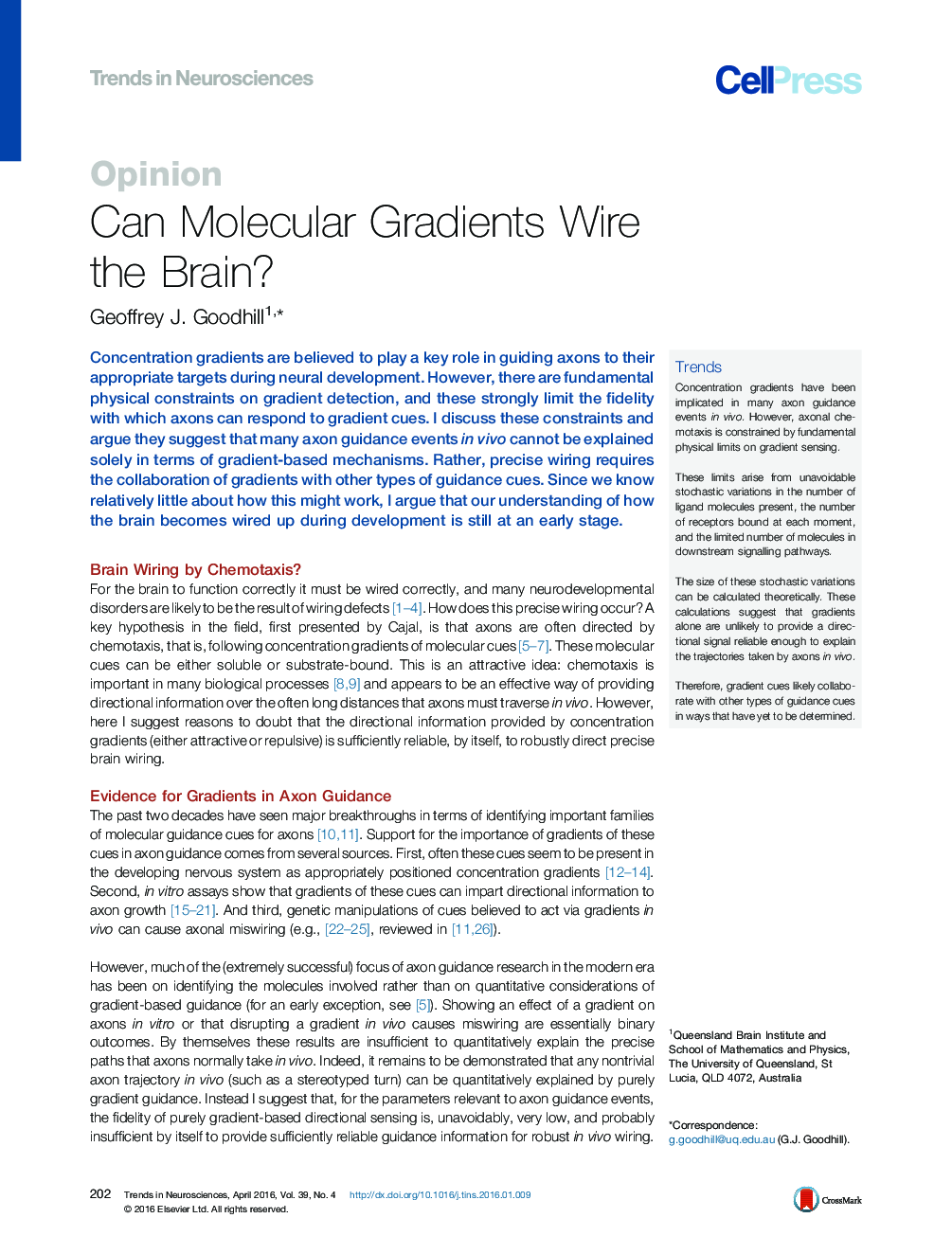| Article ID | Journal | Published Year | Pages | File Type |
|---|---|---|---|---|
| 4354147 | Trends in Neurosciences | 2016 | 10 Pages |
Concentration gradients are believed to play a key role in guiding axons to their appropriate targets during neural development. However, there are fundamental physical constraints on gradient detection, and these strongly limit the fidelity with which axons can respond to gradient cues. I discuss these constraints and argue they suggest that many axon guidance events in vivo cannot be explained solely in terms of gradient-based mechanisms. Rather, precise wiring requires the collaboration of gradients with other types of guidance cues. Since we know relatively little about how this might work, I argue that our understanding of how the brain becomes wired up during development is still at an early stage.
TrendsConcentration gradients have been implicated in many axon guidance events in vivo. However, axonal chemotaxis is constrained by fundamental physical limits on gradient sensing.These limits arise from unavoidable stochastic variations in the number of ligand molecules present, the number of receptors bound at each moment, and the limited number of molecules in downstream signalling pathways.The size of these stochastic variations can be calculated theoretically. These calculations suggest that gradients alone are unlikely to provide a directional signal reliable enough to explain the trajectories taken by axons in vivo.Therefore, gradient cues likely collaborate with other types of guidance cues in ways that have yet to be determined.
